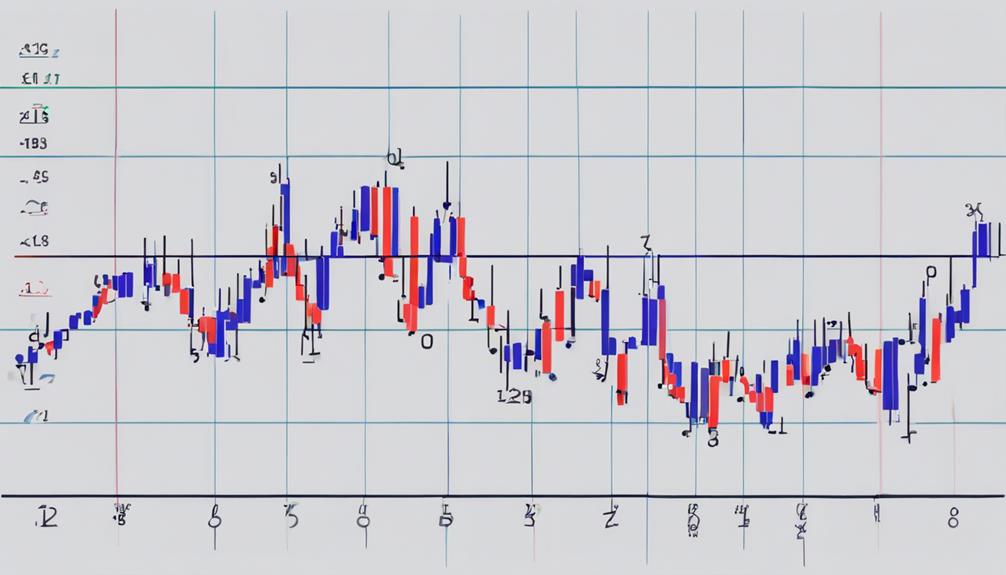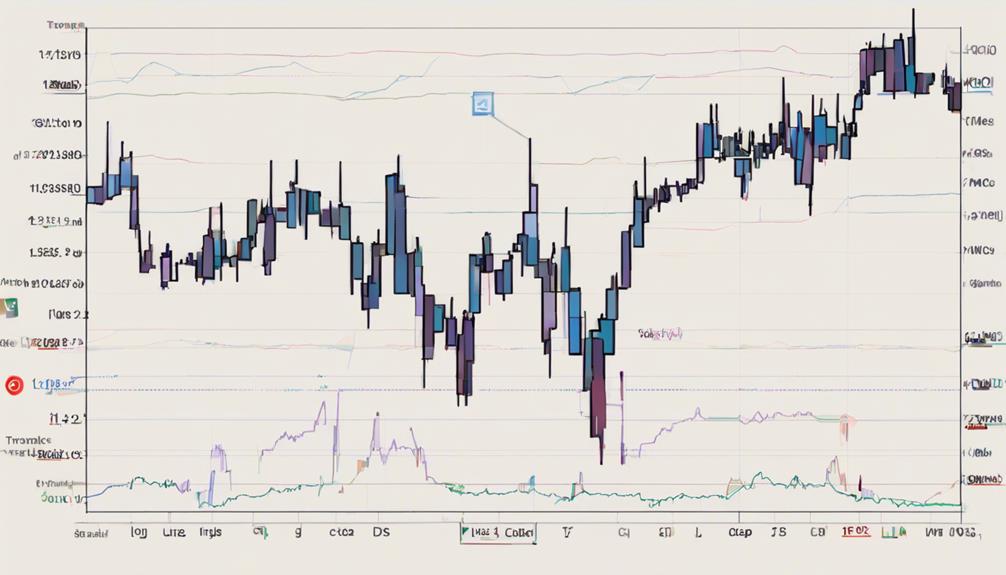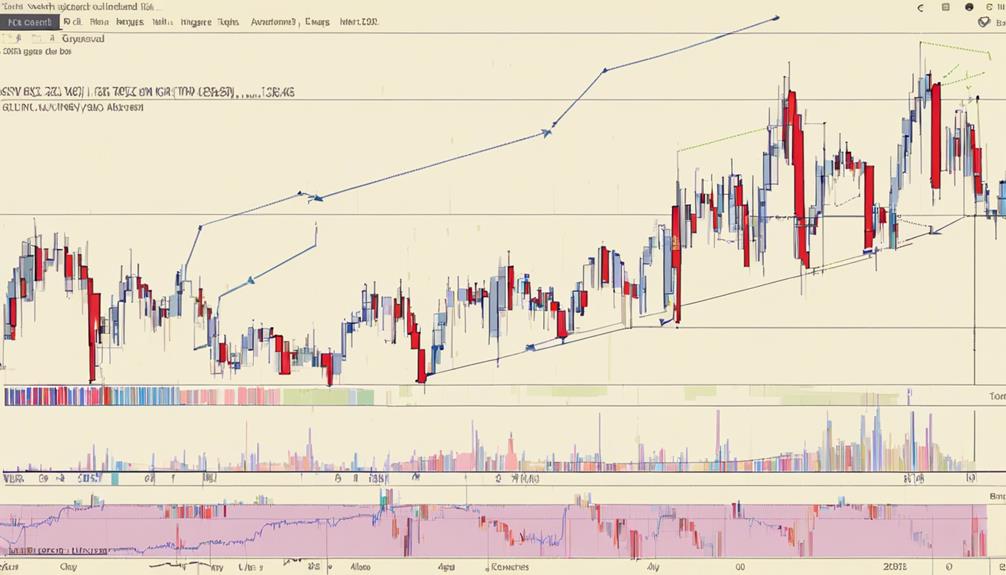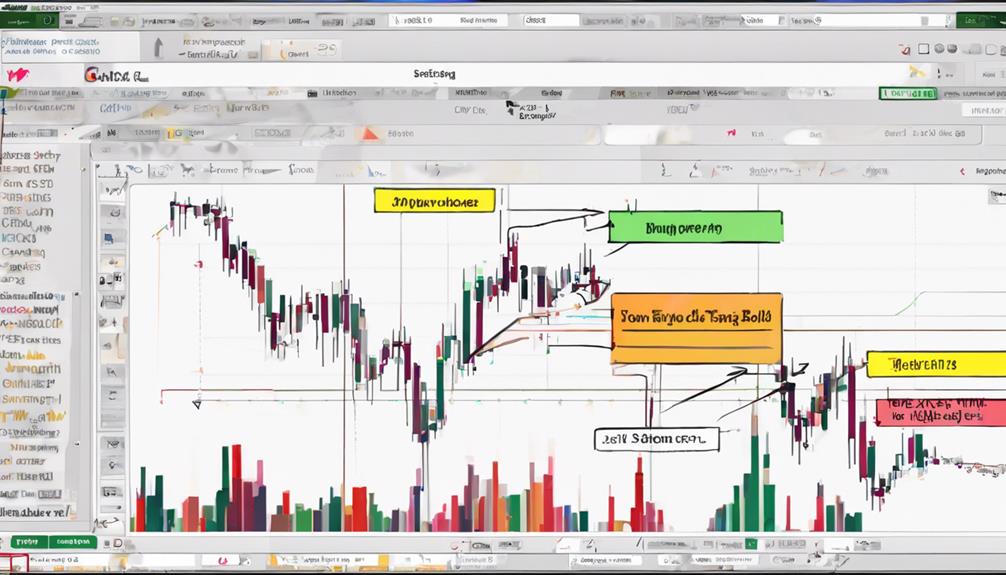When navigating the intricate world of technical analysis in trading, a reliable tool like the Zig Zag Indicator can provide valuable insights into market trends and potential reversals. Understanding the nuances of how this indicator filters out market noise and pinpoints crucial price movements is essential for traders seeking to make informed decisions.
By exploring the practical applications, limitations, and tips for optimal usage of the Zig Zag Indicator, traders can enhance their analytical capabilities and gain a competitive edge in the dynamic financial markets.
Definition of Zig Zag Indicator
The Zig Zag indicator, a widely utilized technical analysis tool in financial markets, serves as a reliable filter for noise in price charts by connecting prominent highs and lows. This tool aids traders in identifying trends and potential turning points within the market. By setting specific percentage settings, the Zig Zag indicator effectively filters out insignificant price movements, focusing on essential support and resistance levels. This approach helps traders visualize the underlying price structure more clearly, highlighting key areas of interest on the chart.
Moreover, the Zig Zag indicator dynamically adjusts to market conditions, ensuring that it accurately reflects the most recent price action. By emphasizing significant price movements while filtering out noise, this tool plays a crucial role in technical analysis, providing traders with valuable insights into market trends and potential reversal points. Integrating the Zig Zag indicator with other technical analysis tools further enhances its effectiveness in analyzing price charts comprehensively.
Zig Zag Indicator Calculation Process

Incorporating the specified percentage threshold chosen by traders, the calculation process of the Zig Zag indicator entails identifying price reversals based on significant movement swings in the market. Traders select a percentage threshold to filter out market noise and focus on substantial price movements.
By comparing current price levels with past highs or lows, the Zig Zag indicator helps traders identify key turning points and potential trend changes. This technical tool dynamically adjusts to new price data, reflecting the most recent market shifts accurately.
The Zig Zag lines produced by this indicator assist traders in recognizing support and resistance levels, aiding in decision-making for trading strategies. Understanding the calculation process of the Zig Zag indicator is crucial for traders looking to interpret trends effectively and make informed trading decisions based on significant price movements in the market.
Practical Application of Zig Zag

Utilizing the Zig Zag Indicator in practice allows traders to streamline the interpretation of price movements by visually connecting significant highs and lows on a chart. When applying the Zig Zag indicator, traders can enhance trend identification and confirmation while filtering out minor price movements.
Here are three key practical applications of the Zig Zag Indicator:
- Filtering Minor Price Movements: The Zig Zag lines help filter out noise by ignoring minor price fluctuations below a set percentage threshold, focusing only on significant price changes.
- Connecting Significant Highs and Lows: By connecting significant highs and lows, traders can better visualize and understand key turning points in the market, aiding in decision-making.
- Adjusting Percentage Threshold: Traders can adjust the percentage threshold based on asset conditions and market changes to ensure optimal analysis and adaptability to evolving trends. Additionally, collaborating the Zig Zag Indicator with moving averages can provide a comprehensive analysis of market trends and potential entry or exit points.
Limitations of Zig Zag Indicator

When considering the Zig Zag Indicator, it is essential to recognize its limitations that may impact the effectiveness of trade timing and decision-making strategies.
The Zig Zag Indicator is a lagging indicator, meaning it may not always promptly reflect actual price movements. Traders should use it more for confirming trend direction rather than relying solely on it for precise timing decisions for trade entries and exits.
The buy and sell signals provided by the Zig Zag Indicator are based on historical price data, which might not always accurately represent current market conditions. Additionally, the most recent Zig Zag line on a chart is subject to change, requiring potential adjustments in trend analysis.
To mitigate these limitations, traders are advised to exercise caution, considering other technical indicators alongside the Zig Zag Indicator to make well-informed trading decisions. By being aware of these constraints, traders can use the Zig Zag Indicator more effectively within their trading strategies.
Tips for Using Zig Zag Indicator

For traders seeking to enhance their market analysis and decision-making strategies, optimizing the settings of the Zig Zag Indicator can be a valuable method to filter out noise and focus on significant price movements. When using the Zig Zag Indicator, consider the following tips:
- Experiment with Different Percentage Thresholds: Adjusting the percentage threshold in the Zig Zag Indicator can help in filtering out smaller price movements and focusing on more significant highs and lows, aiding in better trend identification.
- Combine with Other Technical Indicators: Use the Zig Zag Indicator in conjunction with other technical analysis tools to confirm trend direction. This can provide a more comprehensive view of the market dynamics and enhance decision-making.
- Identify Support and Resistance Levels: The Zig Zag Indicator can assist in pinpointing potential support and resistance levels, aiding traders in making informed decisions regarding entry and exit points based on price reversals and trend changes.
Can I Use the Zig Zag Indicator with Minimal Knowledge?
Yes, you can use the Zig Zag indicator with minimal knowledge by following simplified steps using Zig Zag indicator. Start by identifying swing highs and lows, then plot the indicator on your chart. Finally, use the indicator to spot trend reversals and trade opportunities with ease.
Can I Use the Zig Zag Indicator with Minimal Knowledge?
Yes, you can use the Zig Zag Indicator with minimal knowledge by following the simplified zig zag indicator steps. This tool can help identify trends and potential reversals in the market. By understanding the basic steps, even beginners can effectively incorporate this indicator into their trading strategy.
Can You Provide a Detailed Explanation of the Zig Zag Indicator?
The simplified zig zag indicator tutorial offers a clear breakdown of how to use this tool for technical analysis. By focusing on significant price movements, the zig zag indicator helps traders identify trend reversals and potential entry and exit points. It’s a valuable tool for those looking to improve their trading strategies.
Frequently Asked Questions
What Is the Best Setting for the Zigzag Indicator?
The optimal setting for the Zig Zag indicator varies based on the asset and market conditions. Traders often select a percentage change threshold between 5% and 10% to capture significant price movements, with a 10% threshold highlighting major price peaks and troughs.
What Is the Formula for Zigzag Indicator?
The Zig Zag Indicator formula calculates price reversals by comparing current prices with past highs or lows to detect trend changes. It dynamically updates chart points, focusing on connecting major swing highs and lows for accurate market analysis.
How Do You Use Zigzag Indicator Tradingview?
To utilize the ZigZag Indicator on TradingView, traders can set their desired percentage change threshold to filter market noise, enabling them to visualize significant price trends, potential reversal zones, and crucial turning points in real-time for various financial instruments.
What Is the Default Zigzag Indicator?
The default Zig Zag indicator in trading typically filters price movements below 5% to emphasize significant swings. It aids in pinpointing major highs and lows on price charts for trend analysis. Adjustments can be made to suit individual preferences and market conditions.
Conclusion
In conclusion, the Zig Zag Indicator serves as a powerful tool in navigating the complexities of the financial markets by filtering out noise and highlighting significant price movements.
By providing a clearer picture of market dynamics and potential trend reversals, traders can make more informed decisions.
Like a guiding light in a sea of data, the Zig Zag Indicator helps traders steer their way towards success in the tumultuous world of trading.


